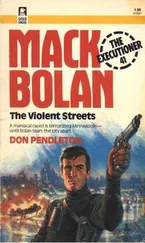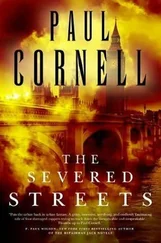Only several months later would Worden hear from his best suspect once more. On that occasion, the boy from Cherry Hill is on the other end of a 24-hour report. On that occasion, he’s the body on the pavement, shot down by persons unknown on a street off the Martin Luther King Boulevard. The Rideout murder stayed red, and in Worden’s mind it became a metaphor. Like everything else he touched, it was good police work with a bad ending, and like everything else in his year, it was unresolved.
But the Rideout case was only one jab in a left-right combination. In mid-September, the sucker punch landed in a crowded Central District courtroom, where state senator Larry Young went to trial for his well-publicized misdemeanor.
Trial is perhaps the wrong word for what actually happened. It was more of a spectacle, really, a public display by prosecutors and detectives who had no real interest in seeing the case pursued aggressively. Instead, Tim Doory of the state’s attorney’s office tried the case personally and with just enough vigor to lose by a judge’s verdict. In laying out the scenario by which the senator had falsely reported his own abduction, Doory made a point of not calling the politician’s aide as a witness, intentionally depriving the state’s case of any motive for the false report and thereby avoiding any on-the-stand revelations about the senator’s private life.
It was a gracious, honorable act and one that Worden understood and accepted. What he didn’t accept was that this public demonstration was even necessary; it infuriated him that the prosecutors’ office and police department were so eager to appear earnest in their pursuit of public misdeed that Larry Young had to be charged and tried and acquitted of a meaningless stupidity. Even so, when it came to his testimony, Worden fell on his sword with seeming indifference. Asked by the senator’s attorney about the key conversation in which Young admitted that no crime had occurred, the detective didn’t hesitate to punch the biggest possible hole in the prosecution’s case.
“So let me understand, detective, you told the senator that he would not be charged if he admitted to you that no crime had occurred?”
“I told him he would not be charged by me.”
“But he has been charged.”
“Not by me.”
Worden then acknowledged that the senator only admitted to the false report after being told that no investigation would proceed if he did just that. Worden also accurately described the conclusion of his conversation with Young, in which the senator declared that no crime had occurred and that he would look into the matter privately.
The senator’s attorney finished his cross-examination with a tight smile of satisfaction. “Thank you, Detective Worden.”
Thank you, indeed. With the senator’s admission portrayed as a coerced act and with the prosecutor reluctant to pursue the motive behind the false report, the District Court judge needed little time to arrive at the expected verdict.
Leaving the courtroom, Larry Young approached Donald Worden and offered his hand. “Thank you for not lying,” the senator said.
Worden looked up, surprised. “Why would I lie?”
In context, it was an extraordinary insult. After all, why would a detective lie? Why would he perjure himself? Why would he risk his own integrity, not to mention his job and his pension, to win a case like this? To nail some politician’s pelt to a wall? To earn the undying respect of Larry Young’s political enemies?
Like every cop, Worden had his cynical streak, but he wasn’t really much of a stoic. Open murders and open deceit-the two operant themes of this godforsaken year-still seemed to bother him more than many younger detectives. It didn’t often show, but there had always been a core of insistent anger inside Worden, a quiet rebellion against the inertia and politics of his own police department. Rarely were those emotions allowed to surface; instead, they festered deep inside, feeding his elevated and insubordinate hypertension. Only once, in fact, did Worden vent his rage during the Larry Young business, and that was a brief exchange in the coffee room, when Rick James tried to lighten his partner’s mood.
“Hey, it’s out of your hands,” said James. “What the fuck are you gonna do?”
“I’ll tell you what I’m ready to do,” growled Worden. “I’m ready to stick my gun inside somebody’s mouth, and that somebody is inside this headquarters building.”
James left it alone after that. What, after all, remained to be said?
At the same time, Terry McLarney went into a clinical depression after hearing a rumor that Worden had expressed interest in an open posting for an investigator with the medical examiner’s office. Worden’s gone, he told others in the squad. We’re losing him to this fucked-up year of his.
“Right now he just looks tired,” McLarney told others in the squad. “I’ve never seen Donald looking so tired.”
McLarney held tight to a slim thread of hope: Get Worden back out on the street with new murders. Good murders, good calls. McLarney believed that if anything could wipe the slate clean for a guy like Worden, it would be real police work.
But Monroe Street had been real police work; the Rideout case, too. They had just ended poorly. Even Worden himself wasn’t really sure what was wrong, and he had no idea where this tunnel was taking him, or whether it even had a light at its end. The best that could be said was that Donald Worden had gotten used to traveling in the dark.
Then, suddenly, a little light began to show. Late September brought that three-for-a-quarter performance on the midnight shift, when Worden worked every body that fell within his field of vision. And one week after those clearances he picked up yet another whodunit on daywork. The case was a loser: a nude woman found carved up behind an elementary school on Greenspring Avenue, discovered by the post officer a good twelve hours after the murder. No identification, no match to any missing persons report.
The beauty of Worden’s performance on that case would not come with its solution, although incredibly, he would come up with a suspect after staying with the file for more than a year. The beauty was that he refused to allow this woman to remain a Jane Doe- “a member of the deer family,” as he liked to put it-to be buried for $200 by the state without the knowledge of friends or family.
For six days Worden was out in the street, looking for a name. The television stations and newspapers wouldn’t run a photograph of the woman’s face: she was too obviously dead. Her fingerprints didn’t match up with anything in either the local computer or the federal data base available to the FBI. And though the body looked pretty clean-an indication that the woman had been living somewhere-no one ever came into a police district to say that their mother or sister or daughter had not come home. Worden checked the group home for homeless women on nearby Cottage Avenue. He checked with the detox and drug treatment centers, because the victim’s liver looked a little gray at autopsy. He canvassed the streets around the elementary school and along the nearest city bus route.
The break had come last night, when he paraded the photograph through every bar and carryout in Pimlico. Finally someone at the Preakness Bar remembered that the dead woman had a boyfriend named Leon Sykes who used to live over on Moreland Avenue. That address was vacant, but a neighbor told him to try 1710 Bentalou. There, a young girl listened to Worden’s story and took him to 1802 Longwood, where Leon Sykes looked at the photo and identified the dead woman as Barbara.
“What’s her last name?”
“I never knew.”
But Leon remembered where the dead woman’s daughter lived. And thus, by pure police work, did Jane Doe-a black female, late twenties-become Barbara Womble, thirty-nine years, of 1633 Moreland Avenue.
Читать дальше












